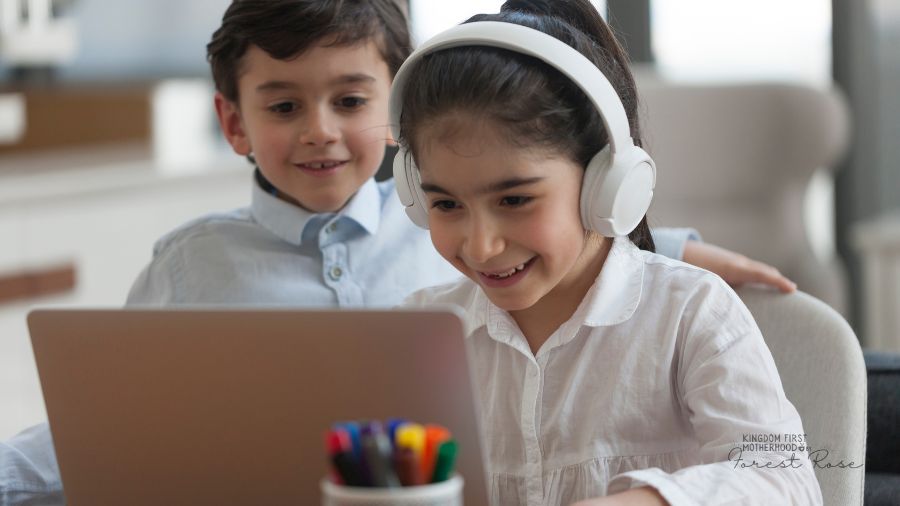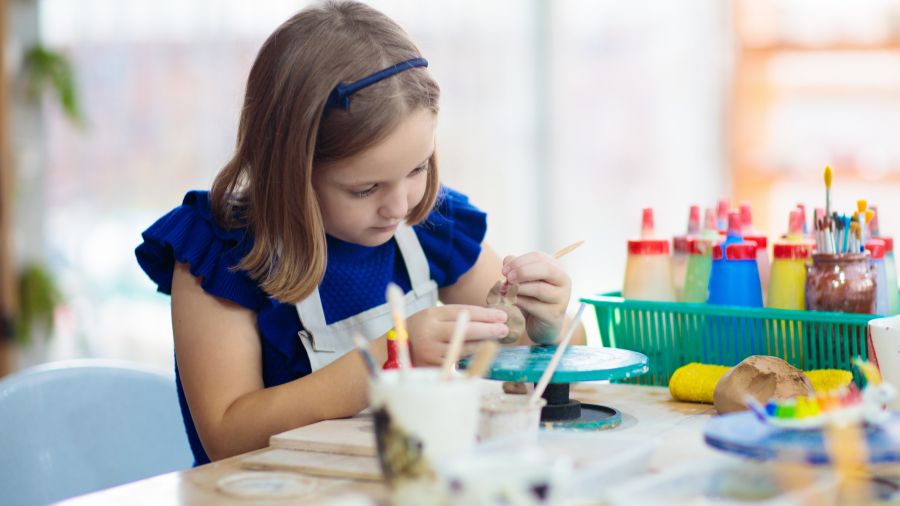Considering the fact that the children of this generation are surrounded by screens, it is more important than ever to encourage creativity within children and take note of how children engage in creative activities. It has been seen that both the methods of crafting through digital as well as traditional ways have some pros and some cons but most of the cons are related to the problem of excess screen time. This article aims at discussing the effects of both digital and conventional crafting on children and how they can strike a balance while engaging in creativity.

Benefits and Considerations of Digital Crafting
Digital crafting is a process of making an art work, designs or any other product that will be developed through the aid of computers or other related technology mediums. This can mean drawing apps, VR crafting applications, and programs for animation and graphic design among others. The benefits of digital crafting include:
Accessibility: The Internet has become a rich source of free and inexpensive means to exercise and explore various forms of art and design which in turn put children in a position where they are likely to try new technologies.
Skill Development: It is important for children to use technology products in their learning since we live in a society where technical skills are assets when it comes to education and job opportunities.
Variety: The choices are enormous as the digital applications extend from the basic drawing and kids craft to the most advanced applications suitable for animation enthusiasts.
However, the same use of digital crafting leads to new questions about the amount of time children spend in front of screens, which is linked to their health and social and emotional development.
Benefits of Traditional Crafting
Another form of crafting is crafting that directly involves the use of paper, glue, and paint, and the benefits of such crafting are fundamentally different including:
Tactile Learning: It is well known that dealing with objects develops certain aspects of children’s development, such as the fine motor skills, hand-eye coordination, and spatial awareness which come into special significance during the age of early childhood.
Sensory Experience: Traditional crafting like a perfume making kit also uses all forms of recognition such as touch, feel, taste, sight and hearing while digital activities do not.
Creativity and Problem-Solving: Doing activities with real kids craft kits supports exploration and thinking, in part because children are manipulating physical objects with their hands and are experiencing various textures, forms, and colors of objects.

Balancing Screen Time with Hands-On Creativity
To foster a well-rounded creative experience for children, it’s important to integrate both digital and traditional crafting into their routine. Here are some strategies to achieve this balance:
Set Clear Limits: Set limits for the usage of screen time depending on the given age appropriately. Use part of this time to encourage digital crafting as it is a constructive use of the time rather than being just a consumer of digital content.
Encourage Cross-Disciplinary Projects: Partially integrate the methods of digital and physical crafting through activities such as drawing ideas on paper and then transforming it into a digital format or engaging a role play with play makeup set and creating a character based on it digitally. Such integration is also useful to extend children’s view on different media and improve their creativity.
Create a Schedule: Schedule the children for certain days and times to be involved in digital crafting and traditional crafting. This enables children to embrace both forms of creativity and also ensures that their routine is a bit more organized in order to accommodate both forms of learning.
Be a Role Model: Show interest in both digital and traditional crafts. Participate in activities with your child to model a balanced approach to creative pursuits and to bond over shared projects.
Focus on Quality Over Quantity: Focus on creativity during a craft project rather than the amount of time taken in completing every task. Give children the time they need in order to engage and create the things they want to create, whether through a screen or a piece of paper.
Every child needs to be guided and have opportunities to be creative on their own along with limited screen time for the holistic growth of the child. This implies that both digital and conventional crafting have positive characteristics that can enhance a child’s creativity, abilities and at the same time encourage them to have fun. Thus, by purposefully incorporating the above mentioned strategies, the parents and tutors can offer the children a well-rounded creative experience that fully benefits from the possibilities of both mediums.
For more homeschooling inspiration, tips and encouragement, make sure to follow KFH on Facebook, Pinterest, Instagram and Twitter, and subscribe to our Newsletter for some FREE GOODIES!
Forest Rose is a God Loving, Blessed Wife, & Mama to 3 girls. She’s passionate about lifting moms out of the trenches that are discouraged, overwhelmed, or feeling alone or isolated. Her hope is to point them to Christ and equip them to rise up with a newfound hope and joy within, that He alone can provide. Besides blogging, she also loves to create printables!




[…] Read more – Digital vs. Traditional Crafting: Balancing Screen Time and Hands-On Creativity […]